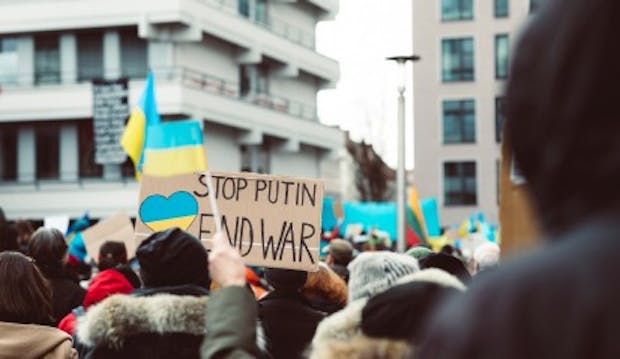the Russia-Ukraine war is reshaping India’s economy

the crisis in Eastern Europe is causing volatility across sectors, be it equities, currency, oil, or aviation.
the year 2022, in the beginning, felt like it would be a new dawn for India. the impact of the pandemic was reducing. the number of deaths, especially, had gone down. flight schedules were getting normalized. public events were happening once again, and employees were getting back to the office. there was the promise of a fresh start.
and just as the normal social and economic activities began, the Russia-Ukraine war began on February 24.
the war between Russia and Ukraine is in full force, even as evacuation activity is underway. about 5,300 km away, India is facing the full brunt of the war.
merely two weeks after Russia invaded Ukraine, the Indian rupee has breached the crucial 77 mark against the US dollar. oil prices are climbing steadily while equity indices are on a constant decline.
travelers are bearing the effects of the crude oil price rise too. airfares have been hiked due to rising jet fuel prices amidst geopolitical tensions.
the worst is still not over with analysts predicting that the war will impact India’s growth rate. there is an expectation of a widening current account deficit, which was at 1.3% of GDP in the September quarter, fuelled by rising oil prices.
the macroeconomic picture
India is dependent on imports for a series of commodities including oil, precious metals, chemicals, and electrical machinery. the Russia-Ukraine war has led to a worldwide price rise across the same commodities. this means that every import will be priced higher.
the affected countries, Ukraine and Russia, are also crucial to India’s export-import bill because we import sunflower oil from Ukraine and fertilizers (apart from defense equipment) from Russia while tea is exported to Russia. these trade activities will now come to a sudden halt due to the war and sanctions placed on Russia.
once trade hits pause, economic growth is affected. the National Statistical Office (NSO) has projected an 8.9% economic growth in 2021-22, which is lower than the 9.2% estimate released in January. in Q3 of the current financial year, GDP growth stood at 5.4%.
feeling the price pinch
when the war was announced, an almost immediate impact was felt in crude oil. the price of Brent crude oil touched $129 (Rs 9,912.04) per barrel for the first time since 2008 in the first few minutes of trade on March 7.
aviation turbine fuel, which is derived from crude oil, surged in quick succession. on March 1, the jet fuel price shot to Rs 96,478 per kilolitre.
airfares have been hiked by almost 20% because fuel accounts for 35-40% of an airline’s operating costs. this comes as a dampener ahead of the long Holi weekend where air travel will be further expensive.
Indians traveling internationally have a lot more to worry about. the Indian currency has weakened against the US dollar. on March 7, the rupee tanked nearly 1% to close at a record low of 76.93, sliding for the fourth straight session. it breached a lifetime low of 77 per dollar due to the lower risk appetite in the market.
with this, Indians have to shell out more money not just for traveling globally but for importing products from abroad. yes, buying an iPhone or AirPods has gotten more costly.
bracing for tough times
as the war rages on, the Indian equity markets have started showing slippery slopes. on March 7, the BSE Sensex fell nearly 1,500 points while the Nifty dipped 383 points.
negative sentiments among institutional investors and record-high crude prices due to the war were the factors affecting the indices. selloff pressures continued to build.
the Street is also expecting the Indian rupee to cross the 80 per dollar level as tensions continue to escalate between Russia and Ukraine.
meanwhile, Life Insurance Corporation’s IPO, touted the country’s biggest ever, may also get postponed as the finance ministry is taking a wait-and-watch approach on the war.
as the world is seeing the crisis unfold, India is hoping for a possible dialogue between Russia’s President Vladimir Putin and his Ukrainian counterpart Volodymyr Zelenskyy. hopes are resting on a peaceful compromise between the two nations. a series of sanctions have been imposed on Russia by the United States and the European Union. since this is still an evolving situation, the world is in a wait-and-watch mode.



